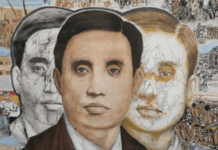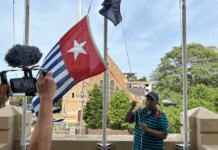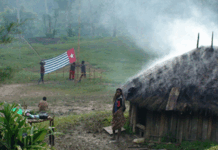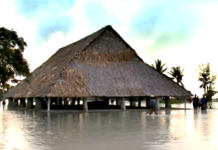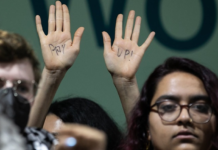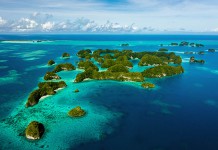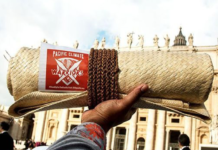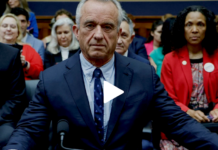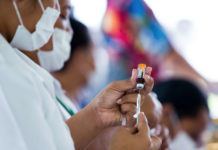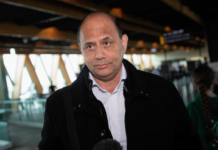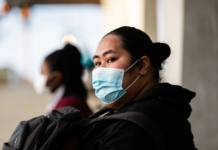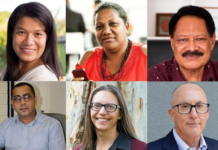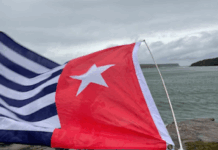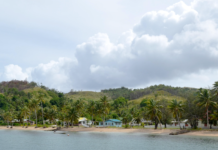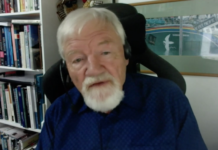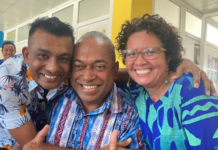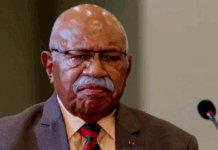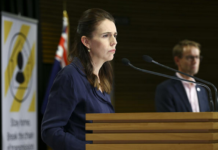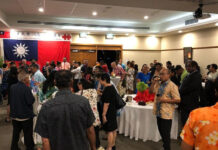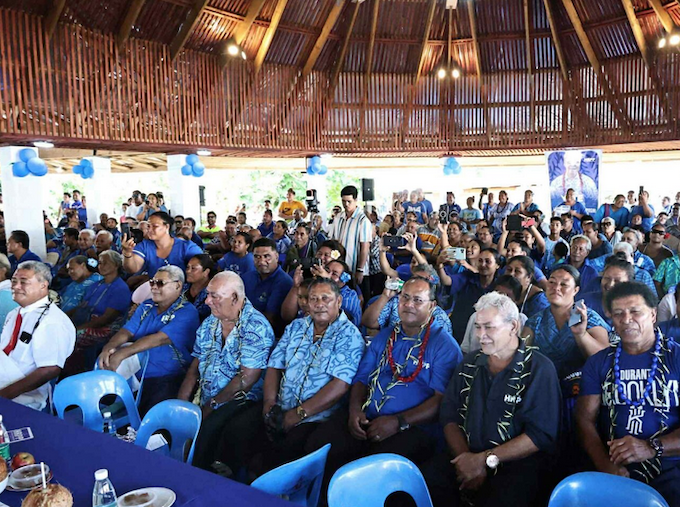
COMMENTARY: By Asofou So’o
Although seven political parties have officially registered to contest Samoa’s general election this Friday, three have been politically visible through their campaign activities and are likely to share among them the biggest slice of the Parliament’s 51 seats.
The question on everyone’s lips is: which one of them will win enough seats to form the next government without the assistance of possible coalition partners?
The three main political parties are the Human Rights Protection Party (HRPP), the Fa’atuatua i le Atua Samoa ua Tasi (FAST) party and Sāmoa United Party (SUP), under the leadership of Tuila’epa Sa’ilele Malielegaoi (Tuila’epa), La’aulialemalietoa Leuatea Polata’ivao Schmidt (La’auli) and Fiamē Naomi Mata’afa (Fiamē) respectively.
La’auli and Fiamē were both long-serving members of the HRPP until their defection from that party when Tuila’epa was prime minister to form the FAST party before the last general election in April 2021.
Fiamē and La’auli became the leader and president of the FAST party respectively while Tuila’epa continued his parliamentary career as the leader of the opposition following the election.
A falling-out between La’auli and Fiamē in January 2025 resulted in the break-up of the FAST into two factions with Fiamē and the 14 ministers of cabinet of her caretaker government establishing the SUP following the official dissolution of Parliament on June 3.
La’auli, now leader of the FAST party, has retained the support of the remaining 19 FAST members of Parliament.
First to publicise manifesto
HRPP was the first political party to publicise its campaign manifesto, launched on June 23. Its promises include:
- a $500 cash grant per year for every family member;
- tax cuts; expansion of hospital services;
- a new bridge between Upolu and Savai’i Islands;
- disability benefit enhancements;
- a $1000 one-off payment at the time of birth to help families cover essential costs for newborn babies;
- an additional $1,000 one-off payment upon completion of infant vaccinations (Hexa-B and MMR-2) at 15 months; and
- zero-rating of Value Added Goods and Services Tax (VAGST) on essential food items.
The FAST party’s manifesto, launched on July 12, reflects a strong focus on social welfare and economic revitalisation. It promises:
- free public hospital services;
- monthly allowances for pregnant women and young children;
- cash top-ups for families earning under $20,000 per annum;
- an increase in the retirement age from 55 to 65;
- VAGST exemptions on essential goods;
- development of a $1.5 billion carbon credit market;
- establishment of a national stock exchange; injection of $300 million into Sāmoa Airways; and
- the expansion of renewable energy and district development funding.
FAST’s signature campaign promise in the last general election was giving each electoral constituency one million tala for them to use however they wanted. That amount will increase to two million tala this time around.
Officially registered on 30 May 2025 and launched on June 5, the SUP launched its campaign manifesto on July 15. It promises:
- free education and hospital care;
- disability allowances and increased Accident Compensation Act payouts;
- land restitution to villages;
- pension increases; and
- expanded services for outer islands that were not reached during Fiame’s premiership — all with a focus on restoring public trust in government.
‘People first’ party
SUP is promoting itself as a people-first party focused on continuity and ongoing reform.
The three main parties are following the practice established by the FAST party in the last general elections in 2021 where all party election candidates and their supporters tour the island group to meet with constituencies and publicise their manifestos.
As part of this process, the HRPP has been branding various FAST claims from last general election as disinformation.
It had been claimed, for example, that the HRPP was moving to cede ownership of Samoan customary land to Chinese people, that the HRPP presided over a huge government deficit and that, as Prime Minister, Tuila’epa was using public funds to send his children overseas on government scholarships.
At the HRPP rallies, Tuila’epa did not mince words in labelling La’auli a persistent liar, asserting that La’auli had been involved in several questionable and unauthorised dealings during the three-year life of the last FAST government, and that La’auli alone was responsible for the break-up of the FAST party when he refused to step down from cabinet following the Ministry of Police’s lawsuit against him in relation to the death of a young man on the eve of FAST general election victory in 2021.
Fiamē, equally, blames La’auli for the unsuccessful completion of the FAST government’s parliamentary term when he refused to step down from cabinet following the Ministry of Police’s lawsuit against him.
Convened caucus meeting
After refusing to step down, La’auli convened a FAST party caucus meeting at which a resolution was passed to terminate the party membership of Fiamē and four other ministers of her cabinet. The split between Fiamē and La’auli culminated in the defeat of Fiamē’s budget and the abrupt dissolution of Parliament.
HRPP said at their rallies that, should they win government, they would pass a law to prohibit roadshows as they do not want “outsiders” influencing constituencies’ voting preferences.
Furthermore, these road shows are costly in terms of resources and time, and are socially divisive.
Instead, they prefer the traditional method of choosing members of Parliament where political parties restrict themselves to compiling manifestos, leaving constituencies to choose their own preferred representatives in Parliament.
Given that the HRPP was the first political party to publicise its manifesto, they probably have a valid point in suggesting that other political parties, in particular the FAST party and SUP, have not come up with original ideas and have instead replicated or added to what the HRPP has taken some time to put together in its manifesto.
Given the political visibility achieved by the HRPP, FAST and SUP through their campaign road shows and their full use of the media, it is to be expected that collectively they will win the most seats.
Furthermore, owing to the FAST party’s turbulent history, HRPP is probably the front-runner, followed by FAST, then SUP. It is unlikely that the smaller parties will win any seats; likewise the independents.
Enough seats main question
The main question is whether HRPP will have enough seats to form a new government in its own right. Coalition government does not seem to work in Samoa’s political landscape.
The SNDP/CDP coalition in the 1985-1988 government and the last FAST quasi-coalition government of 2021-2025 (FAST depended on the support of an independent as well as pre-election alliances with other parties to form government) all saw governments fail to deliver on their election manifestos and provide needed public services.
Perhaps a larger question is how the three parties might fund their extravagant campaign promises.
The HRPP leadership is confident it will be able to deliver on the main promises in its manifesto — compiled and costed by the HRPP Campaign Committee, consisting of former Government ministries and corporations CEOs (Finance, Custom and Inland Revenue, National Provident Fund, Electoral Commissioner, President of the Land and Titles) and a former senior employee of the Attorney-General’s Office — within 100 days of assuming government.
The other two main parties, FAST and SUP, are equally confident.
The public will have to wait and see whether the campaign promises of their preferred party will be realised. Right now, they are more interested in whether their preferred party will get across the line.
Dr Asofou So’o was the founding professor of Samoan studies at the National University of Samoa from 2004 before being appointed as vice-chancellor and president of the university from 2009 to 2019. He is currently working as a consultant. This article was first published by ANU’s Development Blog and is republished under a Creative Commons licence.


